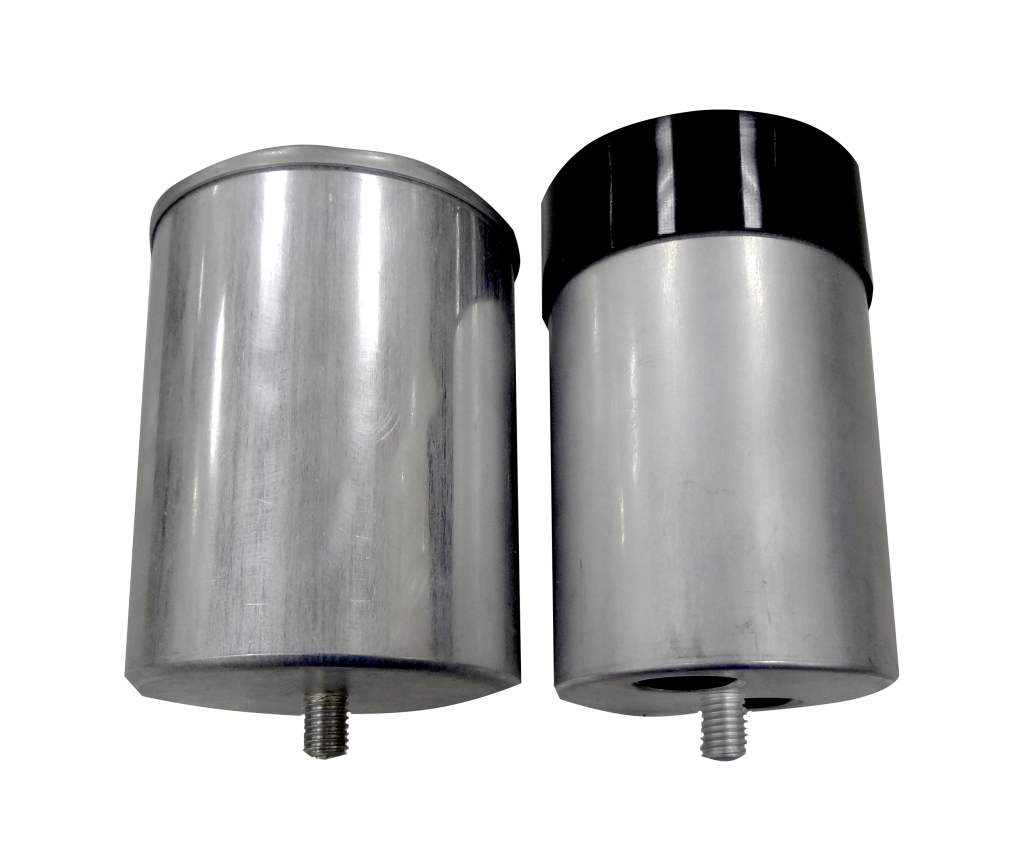
Overview
The equivalent series resistance (ESR) of a film capacitor is a key parameter affecting its high-frequency performance and reliability, directly determining its actual performance in a circuit. This article comprehensively analyzes the essential characteristics of film capacitor ESR, including its physical causes and composition, its various impacts on capacitor performance, and effective optimization methods. By deeply analyzing the correlation between ESR and factors such as the metallized electrodes, dielectric materials, and structural design of film capacitors, this article reveals the importance of the ESR parameter in film capacitor application.
1. The physical cause and Composition of Film Capacitor ESR
The ESR of a film capacitor is a concentrated reflection of the various internal resistance components of the capacitor, reflecting the combined effect of energy loss. The ESR of a film capacitor is primarily composed of three components: electrode resistance, dielectric loss, and contact resistance. The electrode resistance of metallized film capacitors depends on the thickness and conductivity of the metal layer, typically using aluminum or zinc as the evaporation material. The dielectric loss of film capacitors stems from polarization relaxation and ionic conductivity, which are closely related to the molecular structure of dielectric materials such as polypropylene or polyester. The contact resistance of film capacitors, including the connection resistance between the internal electrode leads and the external terminals, directly affects their ESR performance at high frequencies. In actual operation, the ESR of film capacitors exhibits complex characteristics with frequency. At low frequencies, dielectric loss dominates, while at high frequencies, the electrode skin effect significantly influences it. The ESR of film capacitors also exhibits temperature dependence. At high temperatures, enhanced ionic conductivity leads to a decrease in ESR, but excessive temperatures accelerate dielectric aging. Understanding the multiple components of film capacitor ESR is crucial for proper measurement and application.
2.The main Impact of Film Capacitor ESR on Electrical Performance
As a key quality factor, the ESR of film capacitors profoundly affects the actual performance of capacitors in circuits. In filtering applications, the ESR of film capacitors directly determines the filtering effect. Excessively high ESR can increase residual ripple voltage, affecting power quality. In pulsed discharge applications, the ESR of film capacitors causes energy loss and heat generation, reducing system efficiency and potentially leading to temperature out of control. In high-frequency circuits, the ESR and equivalent inductance of film capacitors together form impedance characteristics, affecting frequency response and signal integrity. The ESR of film capacitors also affects their self-healing properties. While an appropriate ESR helps limit the self-healing discharge current, an excessively high ESR can lead to excessive self-healing energy. In parallel applications, differences in the ESR of individual film capacitors can lead to uneven current distribution and accelerate the aging of some capacitors. Increased ESR of film capacitors is also a key indicator of performance degradation and can be used to predict capacitor life. Therefore, fully considering the impact of film capacitor ESR during circuit design is crucial to ensuring system reliability.
3.Optimizing the ESR of Film Capacitors and Material Selection
Reducing the ESR of film capacitors requires comprehensive optimization across multiple aspect: materials, structure, and process. Regarding electrode materials, using high-conductivity metals, such as thickened aluminum layers or composite metal layers, can significantly reduce the contribution of electrode resistance. The choice of dielectric material for film capacitors is crucial. Polypropylene, due to its extremely low dielectric loss (tanδ < 0.0002), is the preferred choice for high-frequency, low-ESR capacitors. In terms of structural design, film capacitors improve current distribution uniformity and minimize the skin effect by increasing electrode contact area and optimizing winding tension. The internal connection process of film capacitors also affects ESR. Advanced connection techniques such as laser welding offer lower interface resistance than traditional mechanical contact. During the manufacturing process, vacuum heat treatment of film capacitors improves the quality of the metal layer, further enhancing conductivity. In recent years, innovative technologies such as nanoparticle-doped dielectrics and gradient metallization electrodes have enabled film capacitors to achieve lower ESR while maintaining high capacitance. These technological advances are continuously pushing the performance boundaries of film capacitors in high-frequency, high-power applications.
4. Accurate Measurement Methods for Film Capacitor ESR
Measuring the ESR of film capacitors requires appropriate methods and equipment for different frequency ranges. At low frequencies (typically below 1kHz), the ESR of film capacitors can be directly measured using an LCR meter in series equivalent circuit, but the influence of the test signal must be considered. For high-frequency film capacitors, ESR measurement requires an impedance analyzer, using a frequency scan to obtain a complete impedance characteristic curve. The actual measured ESR of film capacitors includes the influence of lead inductance, requiring open/short-circuit calibration to eliminate systematic errors. In practical applications, ESR evaluation of film capacitors should take operating temperature into account. High-temperature testing can reveal the stability of the material system. As film capacitors evolve toward higher frequencies and higher powers, more accurate ESR measurement techniques continue to evolve.
Conclusion
As a comprehensive performance parameter, the ESR of film capacitors is becoming increasingly important as electronic devices move toward higher frequencies and higher power densities. This article demonstrates that the ESR of film capacitors is not a single material property but rather the result of a symbiotic interaction between design, materials, and processes, requiring optimization from a systems engineering perspective. Future developments in film capacitors will continue to pursue lower ESR while balancing factors such as capacity, size, and cost to meet the new demands of new energy vehicles, and renewable energy. A thorough understanding of the influencing mechanisms of film capacitor ESR not only facilitates correct selection and application, but also provides a scientific basis for capacitor configuration and heat dissipation design in circuit design. With the continuous emergence of new materials and structures, the ESR performance of film capacitors will continue to improve, providing key support for electronic technology.